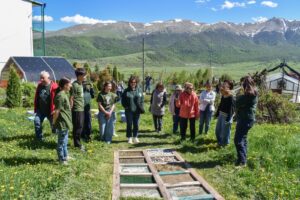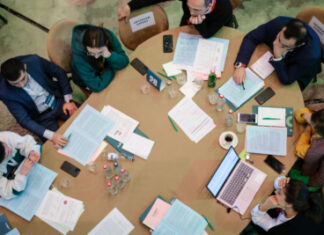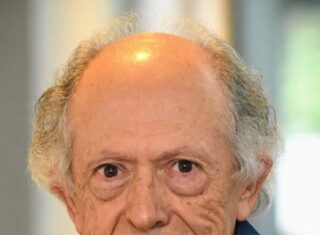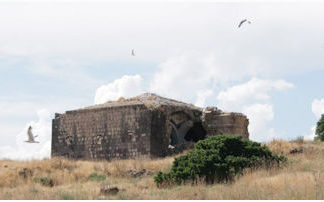By Muriel Mirak-Weissbach
Special to the Mirror-Spectator
BERLIN — This is a most rare art exhibition. Not focused on one artist or even a school, it presents the works of distinct individuals joined through family ties, whose creative endeavors trace out a multifaceted cultural itinerary across vast geographical expanses through decades of turbulent political and social developments. The show that opened in Berlin on May 14, entitled “Four Life Paths: Two Artist Couples in the Armenian Tradition,” is indeed something very special. The works displayed are by four artists whose lives span a century, from before the First World War to the present. Two are Genocide survivors from Western Armenia, who made their way across the Middle East to Yerevan, whereas the other two were born and raised in Armenia, studied and worked there and in Russia. Through their personal and artistic histories, one encounters life in the diaspora, struggles in the Soviet period and the challenges of the independent Republic of Armenia.
The artists are Mariam Aslamazyan (1907 – 2006) and her brother-in-law Nikolai Nikogosyan (born 1918); Harutyun Kalentz (1912 – 1967) and his wife Armine Kalentz (1920 – 2007). Three of the four continued even after the collapse of the Soviet Union, and their artistic endeavors provide rare insights especially for the younger generation into these two crucial epochs in modern Armenian art. For many young artists active 25 years after the fall of the Berlin Wall, it is difficult to conceive what life at that time was like.
The exhibition at the Kulturhaus Karlshorst, which runs until July 3, is part of the German-Armenian Cultural Days, an initiative taking place this year for the second time, which aims at strengthening the bonds of friendship between the two communities. Among the sponsors are the Association of European and Armenian Experts e.V. (AEAE), the Berlin Lichtenberg Department of Education, Culture, Social Affair and Sports as well as the InteriorDAsein/Berlin artist run space. Curators are Dr. Peter Michel, a leading expert in Soviet art, and Archi Galentz, artist and creator of InteriorDAsein, which houses many of the 30 works on display.
Perhaps Archi Galentz is the only person who could have put together such an exhibition. All four artists are his ancestors, and most of the works come from his collection, which he received as memoirs, or as pieces to be restored, or to put on display. But it would be wrong to reduce this to a family affair. Certainly, due to his personal relationship to the artists, he has been able to afford the visitor a privileged insight into their careers as well as their personalities. But his aim in presenting these works, shown here together for the first time, is to explore the question raised, not only by them, but by the younger generation that came after, the generation to which Archi Galentz belongs: how should we evaluate that period in art?







